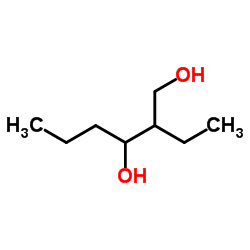Prevention of Lyme disease.
P Couch, C E Johnson
Index: Am. J. Hosp. Pharm. 49(5) , 1164-73, (1992)
Full Text: HTML
Abstract
Lyme disease and the use of tick repellents and physical protective measures to prevent the disease are discussed. Lyme disease is a multiple-organ-system, immune-mediated inflammatory disorder transmitted by the bites of ixodid ticks infected with Borrelia burgdorferi. An individual is at greatest risk for infection when a tick has been attached to the skin for more than 24 hours. Lyme disease occurs in three stages and may affect the skin, nervous system, cardiac system, and joints. Antimicrobials used in management consist primarily of penicillins, cephalosporins, tetracyclines, and erythromycin. Tick repellents are divided into those applied to the skin and those applied to clothing. Skin repellents include N,N-diethyl-meta-toluamide (DEET), 2-ethyl-1,3-hexanediol, and dimethyl phthalate. Permethrin is by far the most effective clothing repellent. DEET plus a permethrin-containing clothing repellent offers the best overall protection. The adverse effects of repellents are minimal, but cases of hypersensitivity have been reported, especially in children. Physical measures to prevent tick bites include avoiding tick-infested areas, wearing light-colored clothing for easy identification of crawling ticks, regularly checking the body and pets for ticks, wearing protective garments and closed-toed shoes, and removing attached ticks promptly by using tweezers or forceps to apply a steady upward pull. A vaccine for the active immunization of humans against Lyme disease remains to be developed. Although antimicrobial therapy is available for persons with Lyme disease, the best approach for those who may be exposed to infected ticks is to apply topical skin or clothing repellents and to practice common-sense measures of physical protection.
Related Compounds
| Structure | Name/CAS No. | Molecular Formula | Articles |
|---|---|---|---|
 |
Etohexadiol
CAS:94-96-2 |
C8H18O2 |
|
Comparative sensitivity of four Anopheles (Diptera: Culicida...
1991-05-01 [J. Med. Entomol. 28(3) , 417-20, (1991)] |
|
The acute toxicity and primary irritancy of 2-ethyl-1,3-hexa...
1985-12-01 [Vet. Hum. Toxicol. 27(6) , 491-5, (1985)] |
|
Intralaboratory and interlaboratory evaluation of the EpiDer...
2009-03-17 [Mutat. Res. 673(2) , 100-8, (2009)] |
|
Pharmacokinetics of 2-ethyl-1,3-hexanediol. III. In vitro sk...
1995-11-01 [Fundam. Appl. Toxicol. 28(1) , 1-8, (1995)] |
|
Repeated exposure toxicity of 2-ethyl-1,3-hexanediol by cuta...
1995-02-01 [Vet. Hum. Toxicol. 37(1) , 33-6, (1995)] |